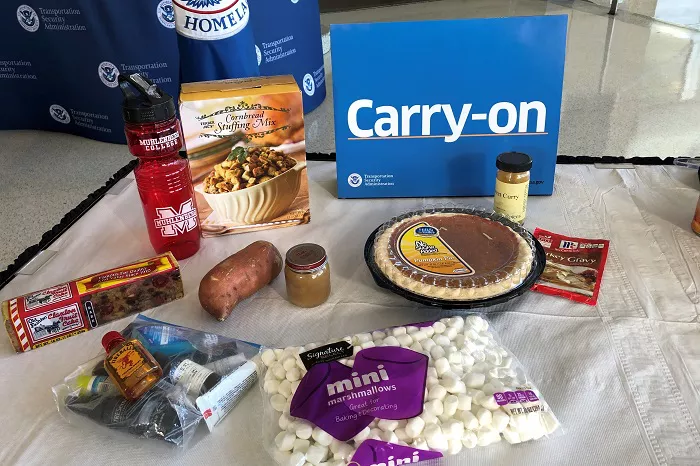Traveling by air often involves navigating various regulations, especially when it comes to what you can and cannot bring through airport security. One common question is: “Can you bring food through airport security?” The answer is yes, but there are specific guidelines to ensure a smooth and hassle-free experience.
Understanding TSA’s Food Guidelines
The Transportation Security Administration (TSA) has established clear rules regarding food items in both carry-on and checked baggage. Here’s a breakdown:
Solid Foods: You can bring solid food items in both carry-on and checked bags. This includes items like sandwiches, fruits, and baked goods. However, be prepared for these items to undergo additional screening.
Liquid and Gel Foods: Items that are liquid or gel-like, such as yogurt, soups, and sauces, are subject to the 3-1-1 liquids rule in carry-on luggage. This means each container must be 3.4 ounces (100 milliliters) or less, and all containers must fit into a single quart-sized bag. In checked baggage, there are no quantity limits for liquids, but it’s advisable to pack them securely to prevent leaks.
Specific Food Items and Their Status
Let’s delve into some common food items and their status according to TSA guidelines:
Snacks
Solid Snacks: Items like chips, nuts, and granola bars are allowed in both carry-on and checked baggage. However, it’s best to keep them in their original packaging for easy identification during screening.
Liquid or Gel Snacks: Foods like pudding cups or dips fall under the liquid category. In carry-on luggage, they must adhere to the 3-1-1 rule. In checked bags, ensure they are well-sealed and placed in leak-proof containers.
Fruits
Fresh Fruits: Generally, you can bring fresh fruits through security. However, be aware of state-specific restrictions. For example, traveling from Hawaii, Puerto Rico, or the U.S. Virgin Islands to the mainland U.S. may have restrictions on certain fruits due to agricultural concerns.
Canned or Jarred Fruits: These are considered liquids and are subject to the 3-1-1 rule in carry-on luggage. It’s often more convenient to pack them in checked baggage.
Fast Food
Purchased at the Airport: If you buy fast food after passing through security, you can bring it onto the plane. However, be mindful of liquid items like drinks, which must comply with the 3-1-1 rule if carried on.
Bringing from Outside the Airport: If you bring fast food from outside the airport, solid items are generally acceptable in both carry-on and checked bags. Liquid items should be packed according to the 3-1-1 guidelines if carried on.
Homemade Foods
Solid Homemade Foods: Items like homemade sandwiches, wraps, and baked goods are allowed in both carry-on and checked luggage. Ensure they are well-packaged to prevent spills or contamination.
Liquid or Gel Homemade Foods: Homemade jams, jellies, and sauces are considered liquids. In carry-on luggage, they must be in containers of 3.4 ounces or less and fit within the quart-sized liquids bag. In checked baggage, there are no specific quantity limits, but secure packaging is essential to prevent leaks.
Tips for Traveling with Food
Packaging: Use airtight containers and resealable bags to prevent spills and maintain freshness.
Separation: Keep food items separate from other belongings to facilitate easy inspection during security screening.
Temperature Control: For perishable items, consider using ice packs. Frozen solid ice packs are permissible in carry-on luggage, provided they are completely frozen at the time of screening.
Stay Informed: Regulations can change, and some items may have restrictions based on your destination. Always check the latest TSA guidelines and any state-specific regulations before traveling.
Conclusion
Bringing food through airport security is permissible, but it’s crucial to understand and adhere to TSA regulations to ensure a smooth journey. Solid foods are generally allowed in both carry-on and checked baggage, while liquid and gel foods have specific restrictions, especially in carry-on luggage. By following the guidelines and tips provided, you can enjoy your meals and snacks without any issues during your travels.

